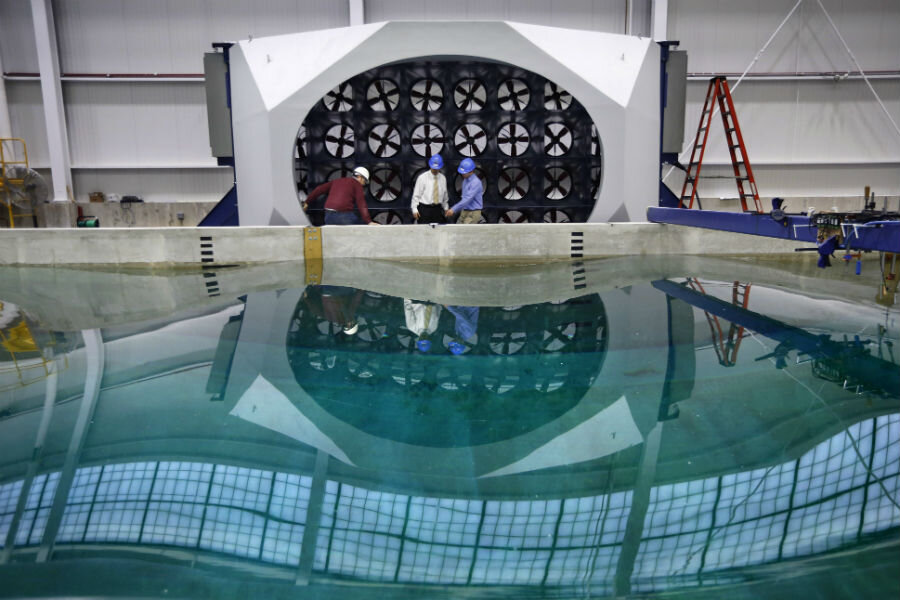What will the University of Maine do with an indoor ocean?
Loading...
Sink or swim? Either way, the ocean is a menacing place for that sort of test.
The University of Maine at Orono is looking to scale down the sea and make it approachable to innovators with its new Ocean Engineering Laboratory, a $13.8-million simulator capable of creating waves that top 100 feet and winds that exceed 200 mph.
The 100-foot pool, made windy and wavy with 32 fans and 16 paddles, will simulate a stormy ocean to help engineers coming up with new products find out if their innovations can hold up to the power of the sea, program director Habib Dagher told The Associated Press. The school's new miniature sea, six years in the making, will be unveiled Monday.
The W2 Ocean Engineering Laboratory will test the fortitude of seaworthy objects as varied as boats, offshore wind turbines, tidal and wave-renewable energy facilities, aquaculture initiatives, oil and gas equipment, and public infrastructure such as ports and bridges, Dagher said.
The project was funded by a combination of public and private grants.
"It's really advancing society by better understanding the ocean – the way things survive in the ocean," Dagher told the AP.
Dagher also envisions using the miniature ocean to model coastal cities like Portland, Maine, and New York City to simulate the impact of sea level rise, he said, with the potential to test protective measures for those places.
A potentially compelling commercial application for the state of Maine is as a testing ground for wind and wave energy technology.
"We're already getting calls from a lot of wind energy folks. There's no facility that can do this right now," said Anthony Viselli, the manager of the facility and project manager of its equipment's construction, in an interview with the AP.
"Technology like this will be of significant value going forward in attracting other companies to our state that are in that industry," he said.
The University of Edinburgh, in Scotland, is already simulating the might of the ocean – its FloWave Ocean Energy Research Facility was unveiled back in June 2014, and is a wave tank that can simulate conditions for every coast of the United Kingdom, BBC News reported at the time.
Testing in tanks can enable research milestones to be achieved in days or weeks, compared with months or years in open water, according to the engineers who created FloWave, and faster development means clean energy products come to market more quickly and cost-effectively.






